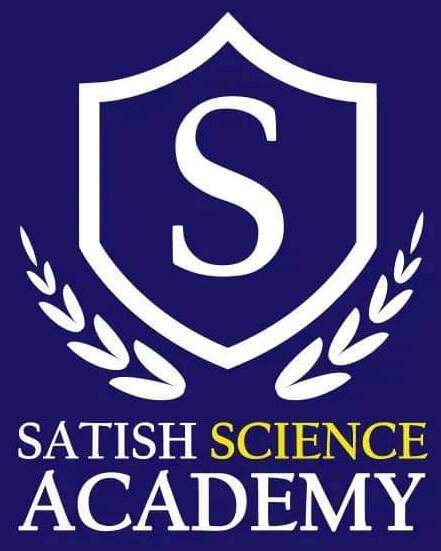Best Guide for Engineering Mechanics 2025: Syllabus, Books, Coaching
Introduction to Engineering Mechanics
What is Engineering Mechanics?
The subject integrates principles from both physics and mathematics to solve engineering problems involving forces, energy, and motion. At its core, Engineering Mechanics is about understanding how and why things move—or stay still. It is typically divided into two major parts:
Statics in Engineering Mechanics:

In the realm of Engineering Mechanics, statics is the study of bodies at rest. It examines how forces, torques, and support reactions balance to keep structures stable. By ensuring the net force and moment on a system equal zero, engineers design safe bridges, buildings, and machines. This foundational concept in engineering mechanics equips professionals with the necessary tools to analyze and guarantee the reliability of diverse structures and systems.
Dynamics
the study of bodies in motion, which includes kinematics (motion without force) and kinetics (motion with force). By mastering these principles, engineers can design and analyze structures, machines, vehicles, and systems with precision and safety. Significance of Engineering Mechanics in Core Engineering Branches Engineering Mechanics holds critical importance across various core engineering disciplines:
Mechanical Engineering:
From analyzing machine components to ensuring the smooth operation of engines and mechanical systems, Engineering Mechanics is essential in designing durable and efficient machinery.
Civil Engineering:
It plays a key role in determining the stability and structural integrity of buildings, bridges, dams, and highways by analyzing loads, stresses, and support reactions.
Aerospace Engineering:
Engineering Mechanics helps understand aerodynamics, propulsion, and flight dynamics, allowing engineers to develop aircraft and spacecraft that are both efficient and safe.
Automotive Engineering:
The subject supports the design of vehicle frames, suspensions, and impact resistance systems by assessing mechanical stresses and dynamic behavior.
Marine and Naval Architecture:
Shipbuilding and offshore structures require deep insights from Engineering Mechanics for stability, buoyancy, and motion analysis. Each of these fields relies heavily on the core principles of mechanics to ensure that the end products are not only functional but also reliable and sustainable. Real-World Applications of Engineering Mechanics The concepts of Engineering Mechanics extend far beyond the classroom or lab.
They are applied in:
Designing safe and earthquake-resistant buildings Predicting the failure points of mechanical components under stress Simulating crash scenarios in automotive safety testing Developing robotics systems and industrial automation equipment Optimizing the performance of wind turbines and hydroelectric systems Enhancing athletic performance through biomechanical analysis
In short, wherever there is motion, force, or structural design involved, Engineering Mechanics plays a pivotal role.
Who Should Study Engineering Mechanics?
Anyone pursuing a career in engineering—especially in Mechanical, Civil, Aerospace, or related fields—must study Engineering Mechanics. It is a foundational subject that builds the analytical and problem-solving skills essential for success in advanced engineering courses and professional practice. Additionally, Engineering Mechanics is valuable for: Engineering students preparing for competitive exams like GATE, ESE, or university-level entrance exams.
Researchers and designers working on innovative products or systems.
Industry professionals involved in structural analysis, system design, or failure analysis. Educators and trainers in technical institutions or engineering coaching centers. Whether you’re building a skyscraper or designing a micro-robot, a strong grasp of Engineering Mechanics equips you with the knowledge to turn concepts into reality.
Key Concepts and Principles in Engineering Mechanics
Engineering Mechanics is built upon several foundational concepts that help engineers analyze the behavior of objects under various conditions. Understanding these key principles is essential for solving real-world mechanical and structural problems effectively.
Force Systems (Coplanar and Non-Coplanar)
In Engineering Mechanics, force systems refer to a group of forces acting on a body. These forces can be:
-
Coplanar Force Systems – All forces lie in the same plane. This is commonly seen in two-dimensional structural analysis like beams and frames.
-
Non-Coplanar Force Systems – Forces act in three dimensions and do not lie in a single plane. This is essential in analyzing complex structures like trusses, cranes, or 3D mechanical systems.
Equilibrium Conditions
A fundamental principle in Engineering Mechanics is that a body is in equilibrium when there is no net force or moment acting on it. The two key conditions are:
-
The sum of all horizontal and vertical forces must be zero.
Newton’s Laws of Motion
The application of Newton’s Laws is central to Engineering Mechanics, especially in dynamics. The three laws define:
-
First Law (Inertia): A body remains in its current state unless acted upon by an external force.
-
Second Law (F = ma): The force on an object is directly proportional to its acceleration.
-
Free Body Diagrams (FBD)
An essential tool in Engineering Mechanics, the Free Body Diagram represents a body isolated from its environment, showing all the external forces and moments acting on it. Drawing accurate FBDs allows engineers to apply equilibrium equations and solve for unknown forces and reactions efficiently.
Friction
In Engineering Mechanics, understanding friction is vital for analyzing motion and stability. It plays a major role in brakes, clutches, machinery parts, and structures resting on surfaces. Static and kinetic friction coefficients are used to calculate the maximum resistance before motion begins or continues.
Centroid and Moment of Inertia
-
Centroid refers to the geometric center of a shape or body.
-
Moment of Inertia is a measure of a body’s resistance to rotational motion around an axis.
In Engineering Mechanics, both concepts are crucial in structural analysis. The centroid helps in load distribution, while the moment of inertia is important in bending and torsional calculations of beams and rotating systems.
Work, Energy, and Power
These are vital dynamic concepts within Engineering Mechanics:
Energy is the capacity to do work; mainly categorized as potential and kinetic energy.
Understanding these helps engineers evaluate machine efficiency, system performance, and energy conservation in mechanical systems.
Engineering Mechanics Syllabus Overview
Engineering Mechanics is a core subject taught in the early semesters of engineering programs across India and globally. It lays the foundation for understanding mechanical behavior in both static and dynamic systems. The syllabus, while varying slightly among institutions, generally follows a consistent structure, especially in top engineering universities like IITs, NITs, SPPU (Savitribai Phule Pune University), and VTU (Visvesvaraya Technological University).
Common Topics Across Universities
Despite regional or institutional variations, most engineering colleges include the following core topics in the Engineering Mechanics curriculum:
Introduction to Engineering Mechanics
-
-
Basic concepts, units, vectors, and scalars
-
Newton’s laws and basic principles of force and motion
Statics
-
Force systems (coplanar, non-coplanar)
-
Equilibrium of particles and rigid bodies
-
Support reactions and beam analysis
-
Trusses and frames
Friction
-
Static and kinetic friction
-
Applications in wedges, ladders, and belt drives
Centroid and Centre of Gravity
-
Centroid of lines, areas, and volumes
-
Centre of mass for composite bodies
Moment of Inertia
-
Area and mass moment of inertia
-
Parallel and perpendicular axis theorems
Dynamics (if included in the syllabus)
-
Kinematics of particles and rigid bodies
-
Work, energy, and power
-
Impulse and momentum
-
-
-
-
-
-
These topics form the theoretical and practical base for various branches of engineering such as mechanical, civil, aerospace, and structural engineering.
Semester-Wise Breakdown (If Applicable)
In most technical universities, Engineering Mechanics is offered in the first or second semester as a compulsory subject. Here’s a general semester-wise structure:
-
Semester 1 or 2 (depending on the university):
-
Part A – Statics: Basic concepts, equilibrium, FBDs, friction, centroid
-
Part B – Dynamics (in some cases): Kinematics and kinetics, energy and momentum principles
-
Some institutions split Engineering Mechanics into two separate subjects: Engineering Mechanics I (Statics) and Engineering Mechanics II (Dynamics), depending on curriculum depth.
Theory vs. Numerical Weightage
The subject of Engineering Mechanics is highly application-oriented. Most universities maintain a balanced distribution between theoretical understanding and numerical problem-solving:
-
Theory Weightage: 30% – Definitions, laws, derivations, and conceptual explanations
-
Numerical Weightage: 70% – Problem-solving based on equilibrium, force systems, friction, centroid, and dynamics
Engineering students are expected to apply theoretical principles to solve real-world mechanical problems using numerical methods.
Tools and Software Used
While the foundation of Engineering Mechanics is analytical, many universities now incorporate software tools to enhance visualization and analysis:
-
ANSYS and SolidWorks: In some advanced courses, used for visualizing structural behavior and motion simulation
-
Online Simulation Tools: For demonstrating concepts like equilibrium, trusses, or motion through interactive platforms
These tools not only aid in better understanding but also bridge the gap between theoretical knowledge and industry-relevant applications.

Importance of Engineering Mechanics in Engineering Disciplines
Engineering Mechanics is the cornerstone of nearly every engineering field. It provides the analytical tools and conceptual framework needed to understand and solve physical problems involving force, motion, and structural behavior. Whether it’s designing a car engine, constructing a skyscraper, or programming a robotic arm, Engineering Mechanics plays a vital role in the practical implementation of engineering concepts.
Mechanical Engineering: Machines, Design, and Automotive Systems
In Mechanical Engineering, Engineering Mechanics is indispensable. It forms the basis for understanding how machines operate and how forces affect moving parts. Key applications include:
-
Machine Design: Calculating forces in gears, shafts, and linkages to ensure mechanical stability and efficiency.
-
Automotive Engineering: Analyzing the performance of vehicle suspensions, engines, and braking systems.
-
Thermal and Fluid Systems: Understanding mechanical systems under different force conditions, especially where pressure and movement are involved.
Without Engineering Mechanics, mechanical engineers would lack the tools to ensure the reliability, safety, and performance of machines and mechanical components.
Civil Engineering: Structures, Bridges, and Construction
In Civil Engineering, Engineering Mechanics is essential for analyzing and designing stable and secure structures. It helps civil engineers:
-
Design Load-Bearing Structures: Evaluate how buildings, dams, and towers respond to forces like gravity, wind, and seismic loads.
-
Bridge Engineering: Understand tension and compression forces within trusses, cables, and decks.
-
Construction Planning: Optimize material usage while ensuring structural integrity and safety on-site.
Engineering Mechanics ensures that structures are not only functional but also safe and long-lasting.
Aerospace Engineering: Aircraft Design and Flight Mechanics
In the field of Aerospace Engineering, the application of Engineering Mechanics is critical for flight dynamics and structural analysis. It supports:
-
Aircraft Structure Design: Ensuring the frame can withstand aerodynamic forces during flight.
-
Flight Mechanics: Understanding forces acting on aircraft during takeoff, cruising, and landing.
-
Spacecraft Engineering: Analyzing motion in zero-gravity environments and ensuring structural stability during launch and re-entry.
Here, Engineering Mechanics enables innovation while maintaining safety and performance under extreme conditions.
Robotics & Mechatronics: Motion Control and Joint Forces
Engineering Mechanics is foundational in Robotics and Mechatronics, where it supports the design and control of intelligent systems. Applications include:
-
Motion Planning: Calculating the trajectory and required forces for robotic movement.
-
Joint and Link Analysis: Understanding the torque and load on robotic arms and actuators.
-
Sensor Integration: Using mechanical models to interpret sensor data for real-time adjustments.
In this domain, Engineering Mechanics bridges the gap between mechanical behavior and intelligent automation, enabling precise and responsive systems.
Tips to Study Engineering Mechanics Effectively
Engineering Mechanics is a subject that combines logic, visualization, and mathematical application. To excel in this foundational subject, students need more than just reading textbooks — they need the right strategies and tools. Below are some effective tips to study Engineering Mechanics efficiently:
Build Strong Mathematical Fundamentals
A solid grasp of basic mathematics, especially vectors, trigonometry, and calculus, is crucial for mastering Engineering Mechanics. These concepts are frequently used to resolve forces, determine motion, and solve equilibrium conditions.
-
Understand how to break forces into components using vector operations.
-
Get comfortable with differentiation and integration — they’re essential in motion analysis and energy calculations.
-
Practice solving geometric problems involving angles, triangles, and coordinate systems.
Master the Art of Drawing Free Body Diagrams (FBDs)
One of the most powerful tools in Engineering Mechanics is the Free Body Diagram (FBD). An accurate FBD is often half the solution to a problem.
-
Identify the points of contact and isolate the body from its surroundings to focus only on the acting forces.
-
Avoid clutter; draw neat diagrams to avoid confusion in calculations.
Practice with Previous Years’ University Papers
Solving past university question papers helps you understand the exam pattern, frequently asked problems, and areas of high importance in Engineering Mechanics.
-
Analyze solutions carefully to identify your weak areas.
-
Understand the types of numerical problems and theoretical questions expected in exams.
Use Simulation Tools for Better Understanding
Visualizing mechanics in action can make abstract concepts easier to grasp. Today, several simulation tools and software support Engineering Mechanics learning:
-
AutoCAD or SolidWorks: Useful for drawing mechanical components and understanding geometries.
-
MATLAB or ANSYS: Helps in simulating forces, stresses, and motion behavior.
-
Online interactive simulators: These show the real-time effect of forces, friction, torque, and motion.
Using these tools not only deepens understanding but also prepares you for industry practices.
Join Study Groups or Coaching Classes
Sometimes, discussing problems with peers or mentors can lead to quicker and clearer understanding. Consider:
-
Forming study groups where members solve and discuss complex problems collaboratively.
-
Attending coaching classes or tutorials that focus specifically on Engineering Mechanics to strengthen core concepts and problem-solving techniques.
-
Engaging in doubt-solving sessions and revision quizzes can reinforce memory and application.
Career Scope and Competitive Exams in Engineering Mechanics
Engineering Mechanics is not just a fundamental academic subject—it is a gateway to a wide array of career opportunities in core engineering sectors. A strong command over Engineering Mechanics is highly valuable in competitive exams, research, and various job roles across industries.
Importance in GATE, IES, and PSU Exams
Engineering Mechanics is a core subject tested in several top-tier competitive exams in India:
-
GATE (Graduate Aptitude Test in Engineering): Essential for securing admission in M.Tech/MS programs and qualifying for high-paying jobs in PSUs like BHEL, ONGC, and IOCL. Topics like equilibrium, force systems, free body diagrams, and friction are regularly tested.
-
IES (Indian Engineering Services): Considered one of the toughest exams for engineering graduates. In both prelims and mains, Engineering Mechanics plays a critical role, especially for Mechanical and Civil streams.
-
PSU Exams: Various Public Sector Undertakings test applicants on applied mechanics knowledge for technical roles in sectors like oil, gas, power, and transportation.
A thorough understanding of Engineering Mechanics can significantly improve your ranking and open doors to prestigious government and private-sector jobs.
Research and Development Roles
Engineering Mechanics is deeply embedded in R&D departments across engineering domains:
-
Mechanical Research: Designing next-gen machines, engines, and industrial equipment.
-
Civil Engineering Research: Structural stability analysis for disaster-resistant construction.
-
Aerospace Innovation: Understanding flight dynamics, force distribution, and material behavior under stress.
Professionals with strong analytical and simulation skills in Engineering Mechanics are highly sought-after in industries driving technological innovation.
Job Roles in Core Engineering
Proficiency in Engineering Mechanics prepares you for multiple job roles, particularly in the mechanical, civil, and aerospace sectors:
-
Structural Analyst: Involves assessing the strength and durability of structures under various load conditions.
-
Mechanical Designer: Focuses on developing detailed mechanical systems with optimal strength and functionality.
-
CAD Engineer: Uses software tools to design and simulate mechanical components based on principles of mechanics.
These roles demand expertise in concepts like moment of inertia, friction, static and dynamic forces—core areas of Engineering Mechanics.
Scope in Core Industries
Core engineering industries place high value on graduates skilled in Engineering Mechanics, especially in areas like:
-
Automotive: Vehicle structure and suspension system design.
-
Construction and Infrastructure: Designing load-bearing systems and structural components.
-
Aerospace and Defense: Flight mechanics, material strength under high stress, and force distribution.
-
Robotics and Automation: Motion control, actuator design, and joint force analysis.
Companies such as L&T, Tata Steel, Mahindra, HAL, DRDO, and ISRO regularly hire engineers with a strong foundation in Engineering Mechanics for technical roles.
Recommended Books and Resources for Engineering Mechanics
To build a strong conceptual and practical understanding of Engineering Mechanics, it’s essential to use the right study materials. From comprehensive textbooks to interactive tools and online platforms, a wide range of resources can help students and professionals grasp core concepts, solve problems, and apply theories in real-world scenarios.
Engineering Mechanics by R.S. Khurmi
A widely recommended book for beginners and diploma-level students, R.S. Khurmi’s Engineering Mechanics is known for its easy-to-understand language, step-by-step solved examples, and large number of practice problems.
-
Ideal for students preparing for university exams and competitive tests.
-
Covers all fundamental topics including force systems, equilibrium, friction, and dynamics.
-
Best suited for Indian engineering curriculum like SPPU, VTU, and other state boards.
Engineering Mechanics by R.C. Hibbeler
For students looking for a deeper, analytical, and global approach, R.C. Hibbeler’s Engineering Mechanics is a top-tier reference.
-
Trusted worldwide and used in IITs, NITs, and foreign universities.
-
Offers both Statics and Dynamics in separate volumes.
-
Focuses on conceptual clarity with high-quality diagrams, real-life engineering examples, and visual problem-solving strategies.
-
Particularly useful for students preparing for GATE, IES, or pursuing higher studies abroad.
Online Video Lectures (NPTEL, YouTube)
Digital platforms have made it easier than ever to access high-quality education in Engineering Mechanics.
-
NPTEL (National Programme on Technology Enhanced Learning): Offers free video lectures from IIT professors covering the complete Engineering Mechanics syllabus.
-
YouTube Channels: Channels like Satish science academy offer topic-wise tutorials, exam tips, and real-world applications.
-
These resources are excellent for revision, visual learning, and clearing conceptual doubts.
Apps and Simulation Tools
Understanding Engineering Mechanics concepts visually enhances long-term retention and real-world applicability. Several apps and tools offer interactive learning experiences:
-
AutoCAD & SolidWorks: For mechanical design and visualization of components based on mechanics principles.
-
MATLAB & ANSYS: For solving complex problems and simulations involving forces, stress-strain analysis, and dynamics.
-
PhET Interactive Simulations: Offers free browser-based simulations to experiment with forces, friction, motion, and balance.
-
LearnCo, Coursera, EdX: Platforms providing structured Engineering Mechanics courses with certifications.
These tools allow learners to apply theoretical knowledge in simulated environments, making learning more practical and engaging.
Common Mistakes to Avoid in Engineering Mechanics
Engineering Mechanics is a foundational subject that demands both conceptual clarity and methodical problem-solving. However, students often make certain avoidable errors that can significantly affect their performance. Recognizing and addressing these mistakes early can lead to stronger understanding and better results.
Misidentifying Forces
One of the most frequent mistakes in Engineering Mechanics is incorrectly identifying or missing forces acting on a body.
-
Students often forget to include normal force, tension, or reaction forces.
-
Mislabeling the direction of applied forces can lead to wrong equations of equilibrium.
-
It’s important to distinguish between real forces (like gravity or friction) and fictitious or assumed ones.
Tip: Always analyze the physical situation carefully and cross-check all forces acting on the object before starting calculations.
Skipping Free Body Diagrams (FBDs)
Free Body Diagrams are the backbone of problem-solving in Engineering Mechanics, yet students often skip this crucial step.
-
Omitting FBDs leads to confusion and incorrect application of Newton’s Laws.
-
Even if the problem seems simple, drawing a clear FBD helps in identifying all acting forces and their directions.
-
Without a proper FBD, equilibrium conditions or equations of motion may be applied incorrectly.
Tip: Make FBDs a habit—it simplifies complex problems and ensures accuracy.
Confusing Scalar and Vector Quantities
Engineering Mechanics relies heavily on vectors—like force, velocity, and displacement—but many students mix them up with scalar quantities such as mass, speed, and energy.
-
Direction is vital when dealing with vectors. Ignoring it often leads to sign mistakes or incorrect results.
Tip: Always clarify whether a quantity has direction (vector) or not (scalar) before performing any calculation.
Ignoring Units and Dimensional Analysis
A common oversight in Engineering Mechanics is neglecting units, which can drastically alter the final result.
-
Incorrect unit conversion (e.g., from mm to m) often leads to wrong answers.
-
Dimensional analysis helps verify whether equations and results are physically meaningful.
-
Students sometimes forget to check the compatibility of units across terms in an equation.
Tip: Always write units in each step of your solution and use dimensional analysis as a tool for error-checking.
Engineering Mechanics – Frequently Asked Questions (FAQs)
1. What is Engineering Mechanics?
Answer:
Engineering Mechanics is the branch of science that studies how forces interact with physical bodies. It focuses on analyzing the effects of forces and torques on objects at rest or in motion, providing the foundation for solving real-world engineering problems.
2. Why should engineering students study Engineering Mechanics?
Answer:
Understanding engineering mechanics is essential for designing structures, machines, and systems. It sharpens analytical thinking and is vital for careers in mechanical, civil, aerospace, and related disciplines.
3. What are the major branches of Engineering Mechanics?
Answer:
The subject is generally divided into:
-
Statics – the study of systems in equilibrium
-
Dynamics – the study of motion, including:
-
Kinematics – motion without regard to forces
-
Kinetics – motion influenced by forces
-
4. What is a Free Body Diagram (FBD)?
Answer:
An FBD is a visual representation of an object isolated from its surroundings, showing all external forces and moments acting on it. It is a vital step in solving force and equilibrium problems in engineering mechanics.
5. What are scalar and vector quantities in Engineering Mechanics?
Answer:
-
Scalars have only magnitude (e.g., mass, temperature).
Understanding this distinction is crucial when solving engineering mechanics problems.
6. What does Moment of Inertia mean in Engineering Mechanics?
Answer:
Moment of Inertia refers to an object’s resistance to angular acceleration around an axis. It depends on how mass is distributed and is essential in designing rotating components and analyzing bending in structures.
7. What is meant by force in the context of Engineering Mechanics?
Answer:
In engineering mechanics, forces are analyzed to predict motion or maintain equilibrium.
8. What is the difference between force and moment?
Answer:
-
Force causes linear motion.
Both are fundamental concepts in engineering mechanics used in structural and machine analysis.
9. What is friction and how is it treated in Engineering Mechanics?
Answer:
Friction is the resisting force between two surfaces in contact. Engineering mechanics categorizes it into static (resisting initial motion) and kinetic (opposing ongoing motion), and it’s crucial in design for safety and efficiency.
10. What is equilibrium in Engineering Mechanics?
Answer:
A body is in equilibrium when the sum of all forces and moments acting on it is zero. This is a key condition in statics, used to ensure structures and components remain stable.
11. What are coplanar and non-coplanar force systems?
Answer:
-
Non-coplanar force systems: Forces act in three-dimensional space.
Engineering mechanics uses different methods to resolve such systems accurately.
12. What is the centroid in Engineering Mechanics?
Answer:
It is used to simplify the analysis of complex shapes and plays a role in structural stability and design.
13. What is a truss, and how is it analyzed in Engineering Mechanics?
Answer:
A truss is a framework of connected elements forming a rigid structure. In engineering mechanics, trusses are analyzed using methods like the joint method or section method to find internal forces.
14. What is a beam in Engineering Mechanics?
Answer:
A beam is a structural member designed to carry loads perpendicular to its length. Engineering mechanics helps determine reactions, shear forces, and bending moments in beams.
15. What are Newton’s Laws and their relevance to Engineering Mechanics?
Answer:
Newton’s Laws of Motion form the basis of dynamics in engineering mechanics:
-
Force equals mass times acceleration.
-
Every action has an equal and opposite reaction.
16. How is Engineering Mechanics relevant in competitive exams like GATE and IES?
Answer:
Engineering mechanics frequently appears in technical exams for GATE, IES, and PSUs. Questions often test conceptual clarity and numerical problem-solving related to statics, dynamics, and structural analysis.
17. What job roles require knowledge of Engineering Mechanics?
Answer:
Careers like mechanical design engineer, structural analyst, aerospace engineer, and robotics engineer require a solid understanding of engineering mechanics for effective problem-solving and innovation.
18. What are the common mistakes students make in Engineering Mechanics?
Answer:
Common errors include:
-
Ignoring free body diagrams
-
Confusing vectors with scalars
-
Forgetting units or conversions
-
Misapplying equilibrium conditions
Regular practice and conceptual clarity help avoid these mistakes.





